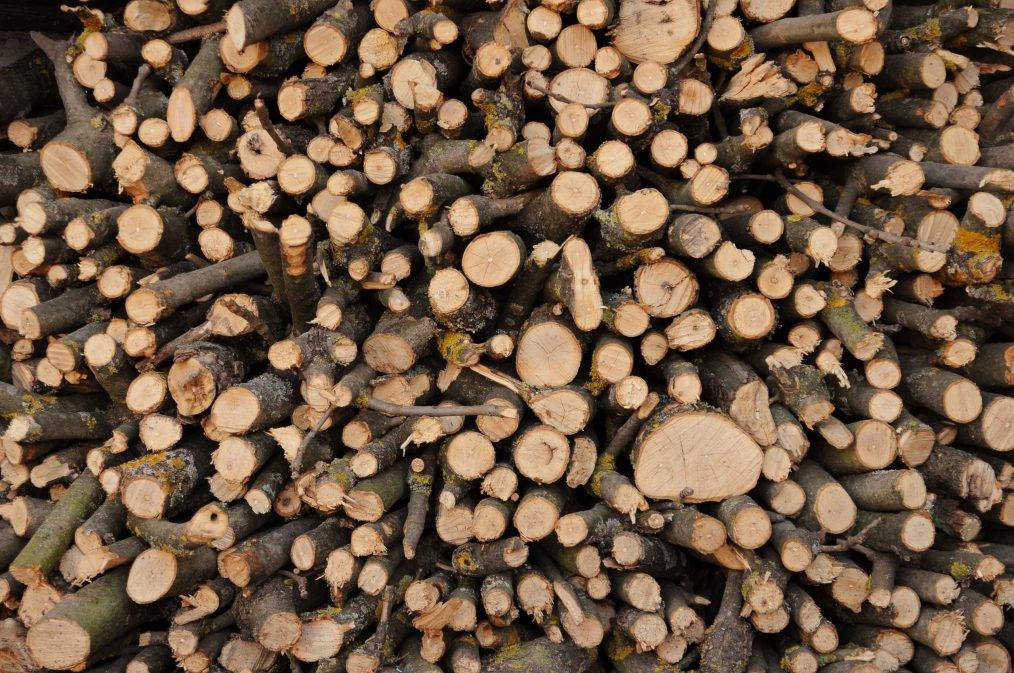Table of Contents
- Tree Removal Negotiation Overview
- What are the grounds for negotiating tree removal?
- How can I approach the process and negotiate with my neighbor for removal?
- What should I do if my neighbor refuses to get the trees removed?
- What are the potential consequences of removing a tree without proper authorization?
- How can I ensure that the tree removal is done in a safe and proper manner?
- Removing large trees
- 10 tips on how to negotiate tree removal
- Stump Removal
- Tree Removal Cost
- Tree Safety
- Tree Removal and Cleanup
Trees are an important part of the environment, providing shade, fresh air, and beauty. However, there may come a time when a tree must be removed for various reasons, such as disease, death, or structural damage.
Tree Removal Negotiation Overview
In such cases, negotiating the removal of a tree can be a challenging and confusing process. This guide will provide you with the essential steps on how to negotiate tree removal and get the best outcome for your situation.
- Assess the Tree Before negotiating tree removal, it’s essential to assess the tree’s condition. Check for signs of disease, such as yellowing leaves, rotting trunk, or mushroom growth at the base. If the tree is dead or diseased, it may pose a risk to you and your property, and it’s best to have it removed as soon as possible.
- Determine Who Owns the Tree Before negotiating tree removal, it’s important to determine who owns the tree. In most cases, the tree is either on your property or the property of a neighbor. If the tree is on your property, you have the right to remove it. However, if the tree is on your neighbor’s property, you may need to discuss the removal with them.
- Evaluate the Cost of Tree Removal Tree removal can be an expensive process, and it’s important to evaluate the cost before negotiating. Contact a tree removal service to get an estimate of the cost and what is included in the service. This information will help you determine the value of the tree removal and negotiate a fair price.
- Talk to Your Neighbor If the tree is on your neighbor’s property, it’s important to have a conversation with them about removing the tree. Explain why the tree needs to be removed and the potential risks it poses. Be open to their concerns and try to reach a compromise.
- Hire a Professional If the tree is too large or complex to remove on your own, it’s best to hire a professional tree removal service. They have the expertise and equipment to safely remove the tree, and they will also handle the clean-up and disposal of the debris.
- Consider the Law There are laws and regulations governing tree removal, and it’s important to follow them. Before removing a tree, check with your local government to see if there are any permits or approvals required. If the tree is protected by law, you may need to get a special permit to remove it.
- Get it in Writing Once you have agreed on the terms of the tree removal, it’s essential to get it in writing. A written agreement will ensure that both parties understand the terms and can hold each other accountable.
In conclusion, negotiating tree removal can be a challenging process, but with careful planning and negotiation, you can get the best outcome for your situation.
If you need help with tree removal, we can connect you with a lawyer who specializes in this area of law.
What are the grounds for negotiating tree removal?
Grounds for negotiating tree removal can include concerns about safety, damage to property or infrastructure, and aesthetic considerations.
In some cases, tree removal may also be necessary to comply with local zoning laws or regulations.
How can I approach the process and negotiate with my neighbor for removal?
It’s important to approach the negotiation process with your neighbor in a respectful and professional manner. Start by having an open and honest conversation about your concerns and the reasons why you believe the tree should be removed.
You may also want to consider seeking mediation or other alternative dispute resolution methods to help resolve the issue.
What should I do if my neighbor refuses to get the trees removed?
If your neighbor refuses to remove the tree, you may need to take legal action. This could involve filing a lawsuit, seeking a court order, or seeking a resolution through local government channels.
It’s important to consult with an attorney who specializes in tree disputes to understand your rights and options.
What are the potential consequences of removing a tree without proper authorization?
Removing a tree without proper authorization can result in legal and financial consequences, including fines, lawsuits, and damage to your reputation.
It’s important to comply with all relevant laws and regulations and to obtain any necessary permits or approvals before removing a tree.
How can I ensure that the tree removal is done in a safe and proper manner?
To ensure that the tree removal is done in a safe and proper manner, it’s important to hire a professional tree removal service. Look for a company that has experience and expertise in tree removal and that is fully licensed and insured.
Additionally, it’s important to carefully review any contracts or agreements and to be aware of your rights and responsibilities as a property owner.
Removing large trees
When negotiating the cutting or removal of a large tree, it’s important to consider the cost and potential danger involved in the removal process. You may need to hire professional tree removal services with specialized equipment to handle the job safely and efficiently.
It’s also a good idea to discuss the cost and any potential hidden costs, such as stump removal or tree replacement, beforehand to avoid any surprises.
Trimming may also be necessary for large trees, and it’s important to discuss this with the tree removal company to ensure that the tree is trimmed in a way that will not compromise its stability.
10 tips on how to negotiate tree removal
- Start the conversation early: The earlier you start the negotiation process, the more time you’ll have to reach a mutually beneficial solution.
- Be respectful and professional: Approach the negotiation process in a respectful and professional manner. This will help to maintain good relationships with your neighbors and to avoid unnecessary conflicts.
- Identify your goals and concerns: Clearly identify your goals and concerns before entering into negotiations. This will help you to better understand your priorities and to communicate effectively with your neighbor.
- Gather information: Gather as much information as possible about the tree and the reasons why you believe it should be removed. This could include documentation of any damage to your property, expert opinions, and photos or videos.
- Consider alternative solutions: Before proposing tree removal, consider alternative solutions that may be more acceptable to your neighbor. For example, you may be able to agree on a pruning or maintenance plan that addresses your concerns without removing the tree entirely.
- Seek mediation or alternative dispute resolution: If your negotiations are not progressing, consider seeking mediation or other alternative dispute resolution methods. This can help to reduce tensions and to find a solution that works for both parties.
- Involve experts: If necessary, involve experts such as arborists or attorneys to help you understand your rights and options.
- Be prepared to compromise: Be prepared to compromise and to consider your neighbor’s perspective. A successful negotiation often requires both parties to make compromises and to find a solution that works for everyone.
- Follow local laws and regulations: Be aware of and comply with all relevant local laws and regulations regarding tree removal. This will help to avoid legal and financial consequences.
- Seek legal advice: If negotiations are unsuccessful, consider seeking legal advice. An attorney who specializes in tree disputes can help you to understand your rights and options and to take appropriate action.
Understanding the cost of removing trees
When you negotiate tree removal, it’s important to have a clear understanding of the cost involved, including the cost of removing large trees and ways to save money through cheap tree removal options.
Tree removal regulations
It’s important to comply with local laws and regulations when negotiating tree removal, so be sure to research the regulations surrounding tree removal in your area.
Environmental impact
Negotiating tree removal should also consider the impact on the surrounding environment and wildlife, as removing trees can have a significant impact on the ecosystem.
Alternatives to removal or tree cutting
Before negotiating tree removal, consider alternative options such as pruning, shaping, or relocation, which can often be more environmentally friendly and cost-effective.
Property value and aesthetics
Consider the impact removing trees will have on the aesthetic and value of your property, as this can impact your decision to remove trees.
Safe and efficient process to remove trees
When negotiating tree removal, make arrangements for safe and efficient removal, including proper disposal of removed trees.
Selecting a cheap tree removal company
Understanding how to negotiate tree removal and the role of tree removal companies and selecting the right company for your needs is an important part of negotiating tree removal.
Removal of a large tree
When negotiating the removal of a large tree, it’s important to consider the cost and potential danger involved in removing such a tree. You may need to hire a professional tree removal company with specialized equipment to handle the job safely and efficiently. It’s also a good idea to discuss the cost and any potential hidden costs, such as stump removal or tree replacement, beforehand to avoid any surprises.
Protecting your property
Protecting your property from damage during the tree removal process is crucial, so be sure to take steps to ensure the safety of your home and surrounding structures.
Stump Removal
One of the first things to consider when negotiating tree removal is the stump. If you’re looking to remove a tree, you’ll also need to think about what to do with the stump. Some tree removal services will remove the stump as part of the process, while others will leave it behind. When negotiating tree removal, it’s important to ask about the cost of stump removal and whether it’s included in the overall cost of the project.
Stump removal considerations for a tree
When negotiating tree removal, it’s important to consider stump removal as well, as this can impact the overall cost and the appearance of your property.
Tree Trimming
Tree trimming is another factor to consider when negotiating tree removal. If the tree is large, you may need to have it trimmed before it can be removed. Trimming a tree can be a dangerous and complex process, so it’s important to make sure you have a professional tree service to handle it. When negotiating tree removal, ask about the cost of tree trimming and whether it’s included in the overall cost of the project.
Services Tree
The type of tree removal services you need will depend on the size and type of tree you have. Some trees are easier to remove than others, and the cost of removing a tree can vary depending on the type of tree and the services required. When negotiating tree removal, it’s important to ask about the different services that are available and what they’ll cost.
Tree Removal Cost
Removal Cost
The cost of tree removal is one of the biggest factors to consider when negotiating tree removal. The cost of removing a tree can vary depending on the size and type of tree, as well as the services required. When negotiating tree removal, it’s important to get a cost guide or a quote from the tree service you’re working with.
Cost Guide
A cost guide can be a helpful tool when negotiating tree removal. A cost guide will give you an idea of what you can expect to pay for tree removal, based on the size and type of tree you have. When negotiating tree removal, it’s important to ask for a cost guide or a quote from the tree service you’re working with.
The cost of tree removal can vary widely depending on the size and location of the tree, the complexity of the project, and the removal services required.
To get a better understanding of the cost of tree removal, ask for quotes from several tree services and compare the prices. Consider factors such as the tree trimming services offered, the cost of stump removal, and any additional fees for cleanup.
This will help you find a tree removal service that offers a fair price and provides the level of service you need.
Free Tree Removal
Free tree removal may be available in certain circumstances, such as if the tree is a safety hazard. When negotiating tree removal, it’s important to ask about any free tree removal programs that may be available in your area.
Tree Safety
When a tree falls
If a tree falls on your property, it’s important to know what to do. Depending on the size and type of tree, it may be necessary to have it removed. When negotiating tree removal for a fallen tree, it’s important to ask about the cost of removal and whether it’s included in the overall cost of the project.
Who is responsible?
When negotiating tree removal, it’s important to determine who’s responsible for the removal. Depending on the circumstances, the property owner, the tree owner, or the local government may be responsible for removing the tree. When negotiating tree removal, it’s important to determine who’s responsible and what the costs will be.
Tree Removal and Cleanup
Tree removal can be a messy process, and it’s important to think about cleanup. When negotiating tree removal, it’s important to ask about the cost of cleanup and whether it’s included in the overall cost of the project.
Arborist and Logs
An arborist is a professional who specializes in the care and maintenance of trees. When negotiating tree removal, it’s important to find an arborist who can help you understand the best course of action for removing the tree and ensure that the process is done safely and responsibly. If you want to keep the logs from the tree for firewood, be sure to discuss this with the arborist and find out if it’s possible and what the additional charge would be.








